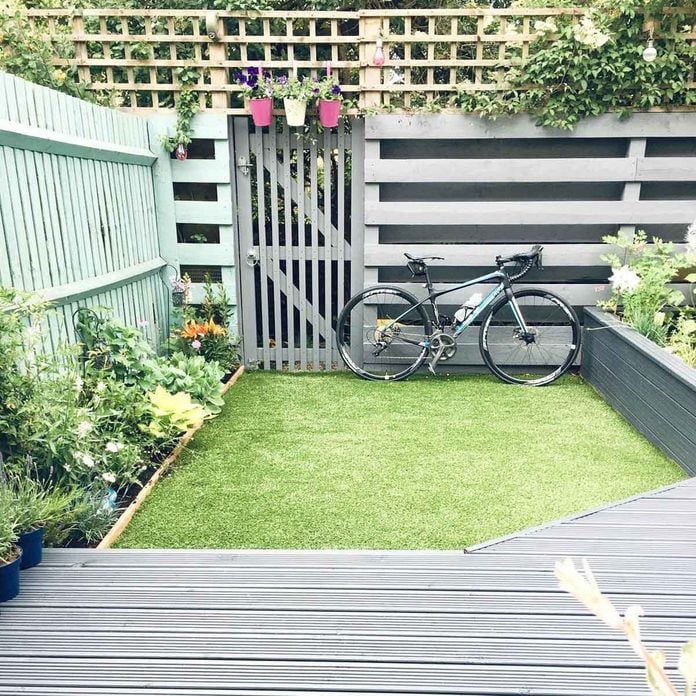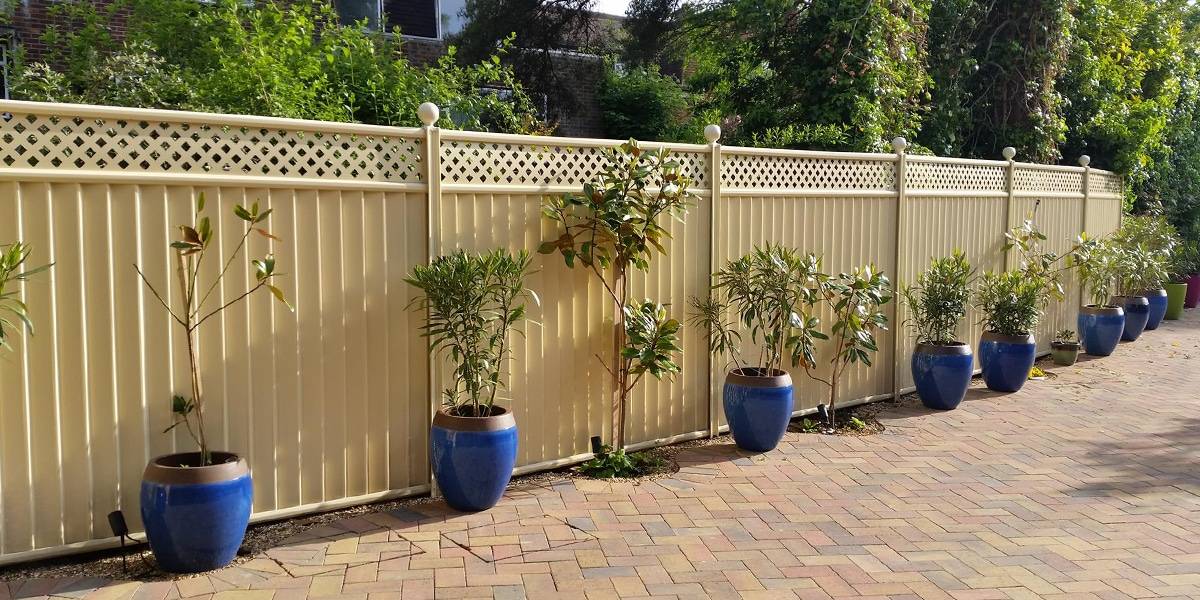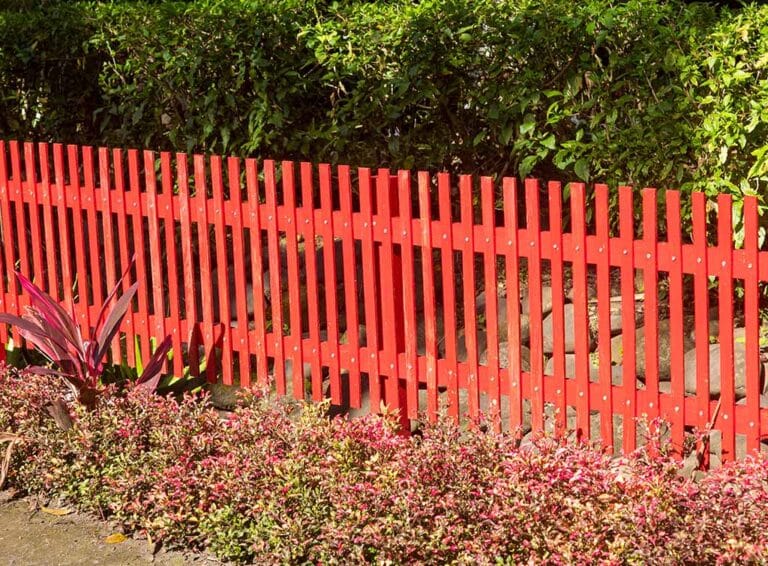Grey Fence? Steal These Stylish Ideas!
Grey Fence? Steal These Stylish Ideas!
Grey fences are experiencing a surge in popularity, moving beyond the mundane and becoming a sophisticated statement in modern landscaping. Their versatility allows them to complement a wide range of architectural styles and garden aesthetics, from minimalist modern to charming rustic. But choosing the right shade of grey can be daunting. This comprehensive guide delves into the world of grey fences, exploring various shades, materials, and design considerations to help you choose the perfect grey fence to enhance your property.
Understanding the Versatility of Grey
Grey's strength lies in its neutrality. It's not as stark as white nor as heavy as black. Instead, it offers a calming, sophisticated backdrop that allows other elements in your landscape to shine. The subtle variations within the grey spectrum – from cool, almost blue-toned greys to warm, taupe-like hues – offer immense design flexibility. This allows grey fences to seamlessly integrate with diverse color palettes and styles. Consider how grey complements vibrant flowerbeds, understated gravel paths, or the rustic charm of natural stone features.
Exploring the Shades of Grey: A Color Palette for Your Fence

The world of grey is far richer than you might imagine. Choosing the right shade requires careful consideration of your home's exterior, the surrounding landscape, and the overall aesthetic you want to achieve. Here's a breakdown of popular grey fence shades and their respective effects:
-
Light Grey (Silver Grey, Dove Grey): These lighter shades offer a clean, airy feel, ideal for smaller gardens or properties where a less imposing presence is desired. They reflect light well, making the space feel brighter and more open. They pair exceptionally well with pastel-colored homes and softer landscaping. Think delicate wildflowers and light-colored paving stones.
-
Medium Grey (Charcoal Grey, Slate Grey): These shades offer a balance between light and dark, providing a classic and timeless look. They're versatile and work well with a variety of architectural styles and landscape designs. They can ground a garden without feeling too heavy or overwhelming. These greys are excellent choices for larger properties or those seeking a more defined boundary.

-
Dark Grey (Anthracite Grey, Storm Grey): Dark greys create a dramatic and sophisticated statement. They are perfect for modern minimalist designs or properties seeking a strong visual presence. Dark grey fences can add depth and texture to a landscape, particularly when combined with contrasting elements like bright greenery or warm-toned lighting. They can also be very effective at creating privacy.
-
Warm Grey (Taupe Grey, Greige): These greys have subtle brown or beige undertones, lending a warmer, more inviting feel. They work well with rustic or traditional homes and gardens, creating a cozy and welcoming atmosphere. Pair them with natural materials like wood and stone for a cohesive look.
-
Cool Grey (Blue Grey, Steel Grey): These greys have hints of blue or green, providing a refreshing and contemporary feel. They are particularly well-suited for modern or coastal-inspired designs. They work beautifully with other cool-toned elements, such as blue flowers or metallic accents.

Material Matters: Choosing the Right Fence for Your Grey
The material you choose significantly impacts the overall look and longevity of your grey fence. Different materials offer varying levels of durability, maintenance requirements, and aesthetic appeal.
- Wooden Fences: Wooden grey fences offer a classic and versatile option. The natural grain of the wood adds texture and warmth, even when painted or stained grey. However, wooden fences require regular maintenance, including staining or painting, to protect them from the elements. Consider using treated lumber for enhanced durability.

-
Metal Fences: Metal fences in grey provide a modern and sleek aesthetic. Aluminum and steel are popular choices, offering exceptional durability and low maintenance. Powder-coated finishes ensure a long-lasting grey color. Metal fences offer excellent security and can be designed in various styles, from simple and minimalist to intricate and ornate.
-
Vinyl Fences: Vinyl fences are a low-maintenance and durable option, particularly well-suited for busy homeowners. They come in a wide range of grey shades and require minimal upkeep. Vinyl fences resist rot, insect damage, and fading, making them a long-term investment. However, they may not offer the same aesthetic warmth as wood.
-
Composite Fences: Composite fences, made from a blend of recycled materials and wood fibers, offer a compromise between the natural look of wood and the durability of vinyl. They are available in various grey shades and require minimal maintenance. Composite fences provide a good balance between aesthetics and practicality.

Designing with Grey: Integrating Your Fence into Your Landscape
The success of a grey fence lies not only in its color but also in its integration with the broader landscape. Here are some design considerations to maximize its impact:
- Complementing Your Home's Exterior: Choose a grey shade that complements the color of your house. If your home is a warm tone (beige, cream, or brown), opt for a warm grey. For cooler-toned homes (blue, green, or grey), a cool grey would be a harmonious choice.

-
Considering the Surrounding Landscape: The existing plants and hardscaping in your garden should inform your choice of grey. A darker grey might enhance a lush, green garden, while a lighter grey would complement a more minimalist, sparsely planted space.
-
Adding Visual Interest: Break up the monotony of a long grey fence by incorporating contrasting elements. This could include strategically placed planters, climbing plants, or outdoor lighting. Consider using varying textures, such as combining smooth metal with rough-hewn stone.
-
Playing with Light and Shadow: Grey fences interact differently with light depending on the shade and material. Lighter greys reflect light, creating a brighter space, while darker greys absorb light, adding depth and drama. Consider how sunlight will affect the fence throughout the day when making your selection.

- Maintaining Your Fence: Regular maintenance is essential to preserve the beauty and longevity of your grey fence. This includes cleaning, repainting or restaining (for wood), and addressing any damage promptly.
Beyond the Basics: Creative Grey Fence Ideas
Let's explore some creative ways to incorporate grey fences into your landscaping design:

-
Grey Fence with Pops of Color: Use brightly colored flowers and plants to create a striking contrast against the neutral backdrop of a grey fence. Consider incorporating vertical gardens or hanging baskets for added visual appeal.
-
Grey Fence with Modern Landscaping: Combine a grey fence with clean lines, geometric shapes, and minimalist planting for a contemporary aesthetic.
-
Grey Fence with Rustic Elements: Pair a grey fence with natural stone pathways, wooden accents, and rustic planters for a charming and inviting atmosphere.

-
Grey Fence with Coastal Touches: Use a cool-toned grey fence, combined with driftwood, seashells, and beach-themed plants, to create a relaxed and seaside-inspired look.
-
Grey Fence with Privacy Features: Incorporate latticework or climbing plants onto the grey fence to enhance privacy and add visual interest.
Conclusion: Choosing Your Perfect Grey Fence

Selecting the perfect grey fence requires careful consideration of various factors, from the specific shade of grey to the material and design elements. By understanding the nuances of different greys, materials, and design principles, you can create a fence that is not just functional but also a beautiful and stylish addition to your property. Remember to consider the overall aesthetic of your home and landscape, and don't be afraid to experiment with different combinations to find the perfect grey fence that reflects your personal style and enhances the beauty of your outdoor space. With careful planning and attention to detail, your grey fence will become a stunning focal point that elevates your curb appeal and adds significant value to your home.
Grey Fence Frenzy: Chic Color Ideas for Your Dream Home
Grey. A seemingly simple colour, yet one that offers a surprising spectrum of possibilities when it comes to fencing. It's no longer just a background hue; grey has emerged as a bold and versatile choice for exterior design, capable of transforming the aesthetic of any property. This comprehensive guide delves into the captivating world of grey fencing, exploring various shades, styles, and considerations to help you choose the perfect grey for your home.
Beyond "Just Grey": Understanding the Nuances
The term "grey" is incredibly broad. Think about it: from the almost-white whisper of light grey to the deep, brooding tones of charcoal grey, the variations are practically endless. This diversity allows grey fencing to seamlessly integrate with a wide range of architectural styles and landscaping designs. Let's break down some key shades and their potential applications:

-
Light Grey (Silver Grey, Dove Grey): These subtle shades lend a sense of airy elegance. They're perfect for properties with a minimalist or contemporary aesthetic, allowing the landscaping and home's architecture to take center stage. They work particularly well with bright, vibrant planting schemes.
-
Medium Grey (Pewter Grey, Slate Grey): These versatile shades provide a classic, understated look. They offer a good balance between subtle elegance and visual impact, suitable for a range of architectural styles from traditional to modern. They pair beautifully with both warm and cool-toned landscaping.
-
Dark Grey (Charcoal Grey, Anthracite Grey): These dramatic shades command attention, adding a sense of sophistication and gravitas. They create a strong visual boundary, ideal for properties seeking a more defined and private feel. They contrast beautifully with lighter-colored homes and landscaping.

- Warm Greys (Taupe Grey, Greige): These shades incorporate subtle undertones of brown or beige, creating a warmer, more inviting feel. They work wonderfully with rustic or traditional styles, blending seamlessly into natural surroundings.
Choosing the Right Grey for Your Home and Landscape
Selecting the perfect grey fence isn't solely about personal preference; it requires careful consideration of several factors:

-
Your Home's Exterior: The color of your house plays a crucial role. A light grey fence might get lost against a light-colored home, while a dark grey fence might overwhelm a small cottage. Aim for color harmony or strategic contrast. Consider the existing colors of your siding, roof, and trim to ensure a cohesive look. Warm-toned homes often pair well with warm greys, while cool-toned homes can complement cool greys or even create striking contrast with a darker grey.
-
Your Landscaping: The existing and planned landscaping significantly impacts your fence choice. A light grey fence can visually recede into a lush green garden, whereas a darker grey can provide a strong contrast and define the garden space. Consider the colors of your plants, flowers, and pathways to ensure a balanced and visually appealing overall aesthetic. Think about whether you want the fence to blend seamlessly or stand out as a feature.
-
The Style of Your Home: The architectural style of your home dictates the appropriate fence style and color. A traditional home might benefit from a classic medium grey fence with a traditional design, while a modern home might embrace a sleek, dark grey fence with a minimalist design.

-
The Surrounding Environment: The overall context of your property also matters. If your home is nestled in a dense woodland area, a darker grey might blend more naturally. Conversely, a lighter grey might feel more appropriate in a bright, sunny location.
-
Fence Material: The material of your fence also impacts the way the grey appears. A grey wooden fence will have a different texture and visual impact than a grey metal or vinyl fence. Wood can absorb and reflect light differently than other materials, influencing the perceived shade of grey. Metal fences can reflect light, making them appear brighter or darker depending on the lighting conditions.
Grey Fence Styles: Beyond the Color

The choice of grey is only half the equation. The style of your fence is equally important in creating the desired aesthetic. Consider these options:
-
Picket Fences: Classic and timeless, picket fences offer a charming and inviting look. A light or medium grey picket fence can create a delightful, cottage-like feel.
-
Privacy Fences: For maximum privacy, a solid fence is essential. Darker greys often provide a more substantial and imposing look, ideal for creating a secluded backyard oasis.

-
Split Rail Fences: Rustic and elegant, split rail fences are a popular choice for rural or countryside settings. A grey-stained split rail fence can add a touch of sophistication to a rustic landscape.
-
Modern Metal Fences: Sleek and contemporary, metal fences offer durability and a clean, minimalist look. Dark grey metal fences are particularly striking, making a bold architectural statement.
-
Composite Fences: Offering low-maintenance and a variety of styles, composite fences are a versatile choice. Grey composite fences can mimic the look of wood or metal, offering a long-lasting and visually appealing option.

Maintenance and Longevity of Grey Fences
The longevity of your grey fence depends largely on the chosen material and the level of maintenance provided. Wood fences require regular staining or sealing to protect against the elements and prevent fading. Metal and vinyl fences generally require less maintenance, but regular cleaning can help preserve their appearance. Consider the climate in your area when choosing your fence material and color; darker colors can absorb more heat and may fade faster in harsh sunlight.
Adding Personality: Accessories and Enhancements

Don't underestimate the power of accessories to elevate your grey fence. Here are some ideas:
-
Planters: Add hanging planters or ground-level planters along the fence line to soften the look and introduce color and texture.
-
Lighting: Strategic lighting can highlight the fence's architectural details and create a welcoming ambiance, particularly in the evening.

-
Trellises: Adding trellises to your fence provides a vertical element, allowing climbing plants to add beauty and privacy.
-
Artwork: Depending on the fence material and style, you might even consider incorporating artwork or decorative elements.
Conclusion: Embrace the Grey

The versatility of grey fencing allows for endless creative possibilities. By carefully considering the nuances of different shades, styles, and materials, you can transform your outdoor space into a stunning reflection of your personal style and create a truly unique and welcoming environment. From the subtle elegance of light grey to the dramatic sophistication of dark grey, the possibilities are as limitless as your imagination. So, embrace the grey fence frenzy and embark on the journey of creating the outdoor space of your dreams. Remember, the perfect grey is waiting to be discovered!


